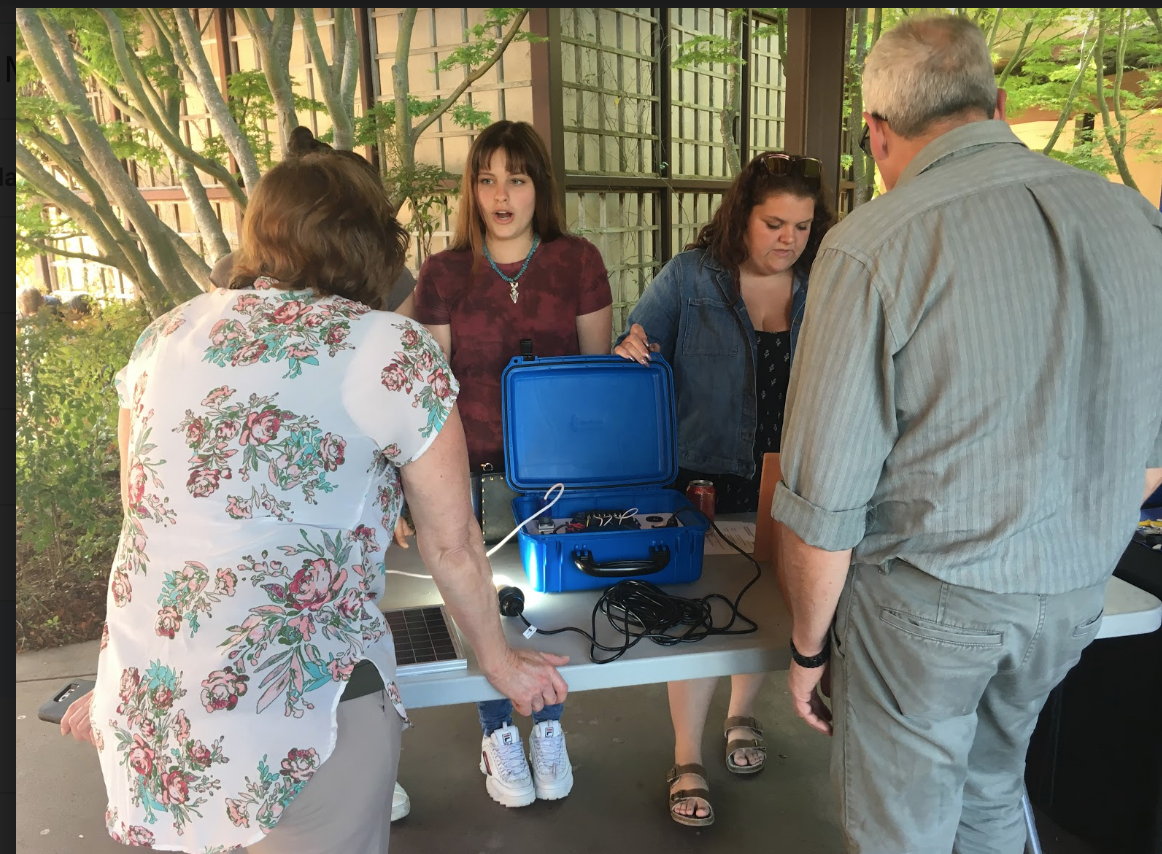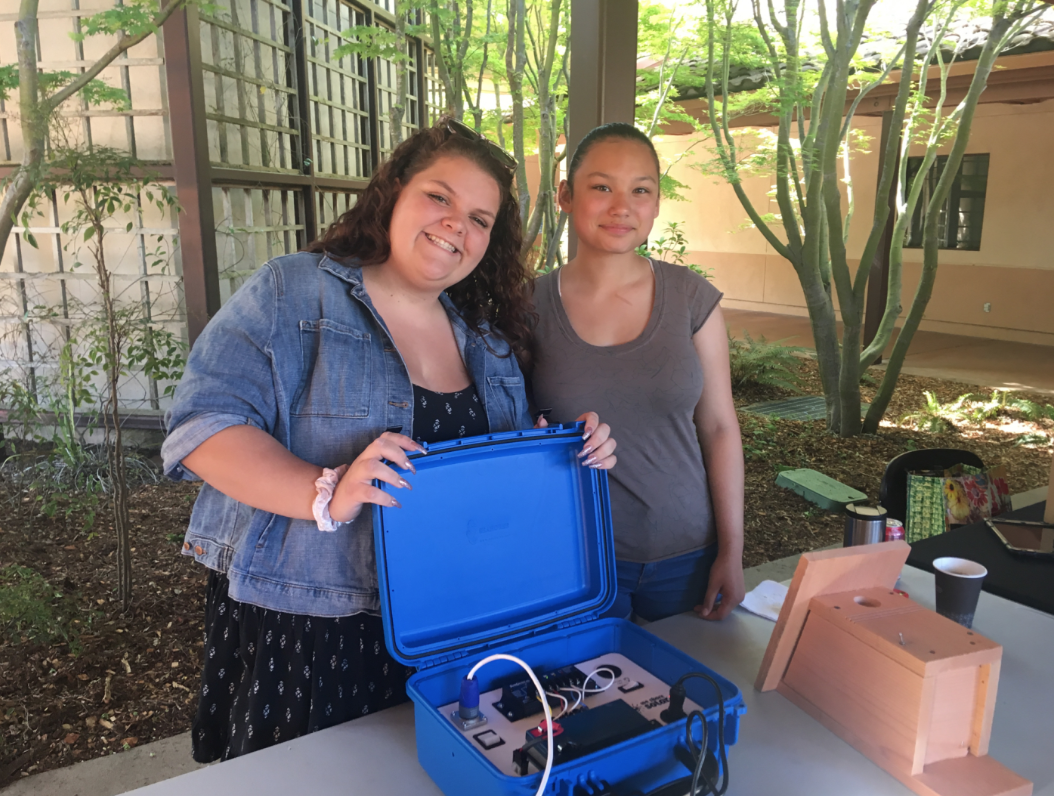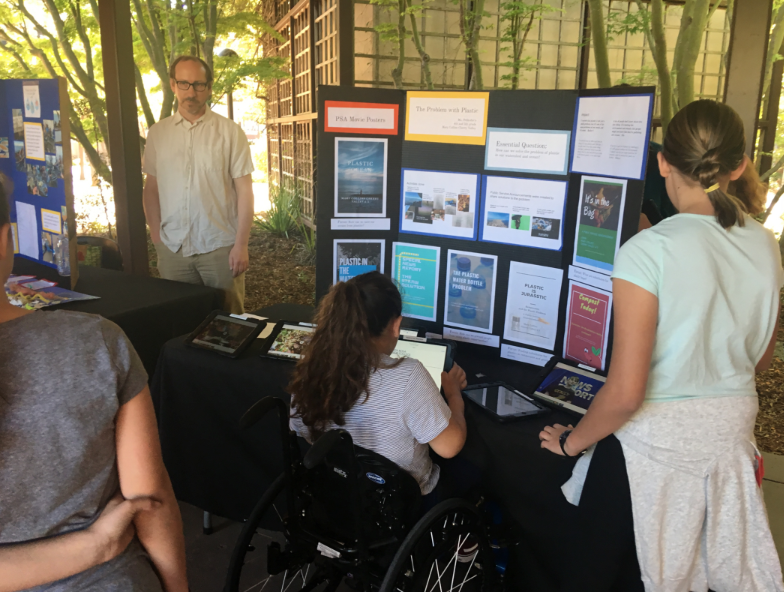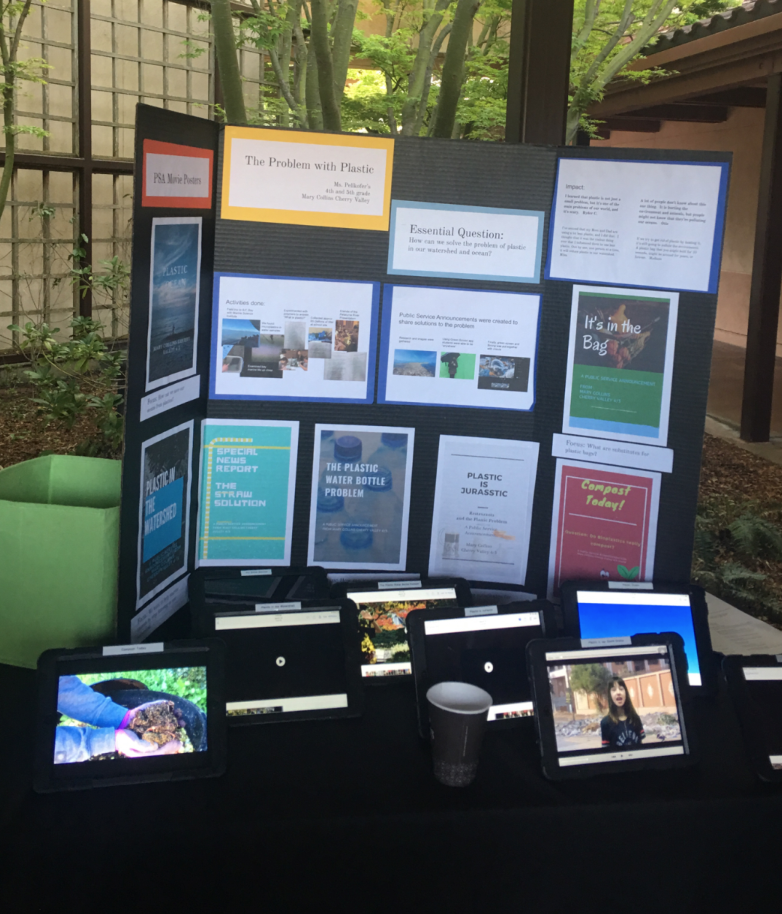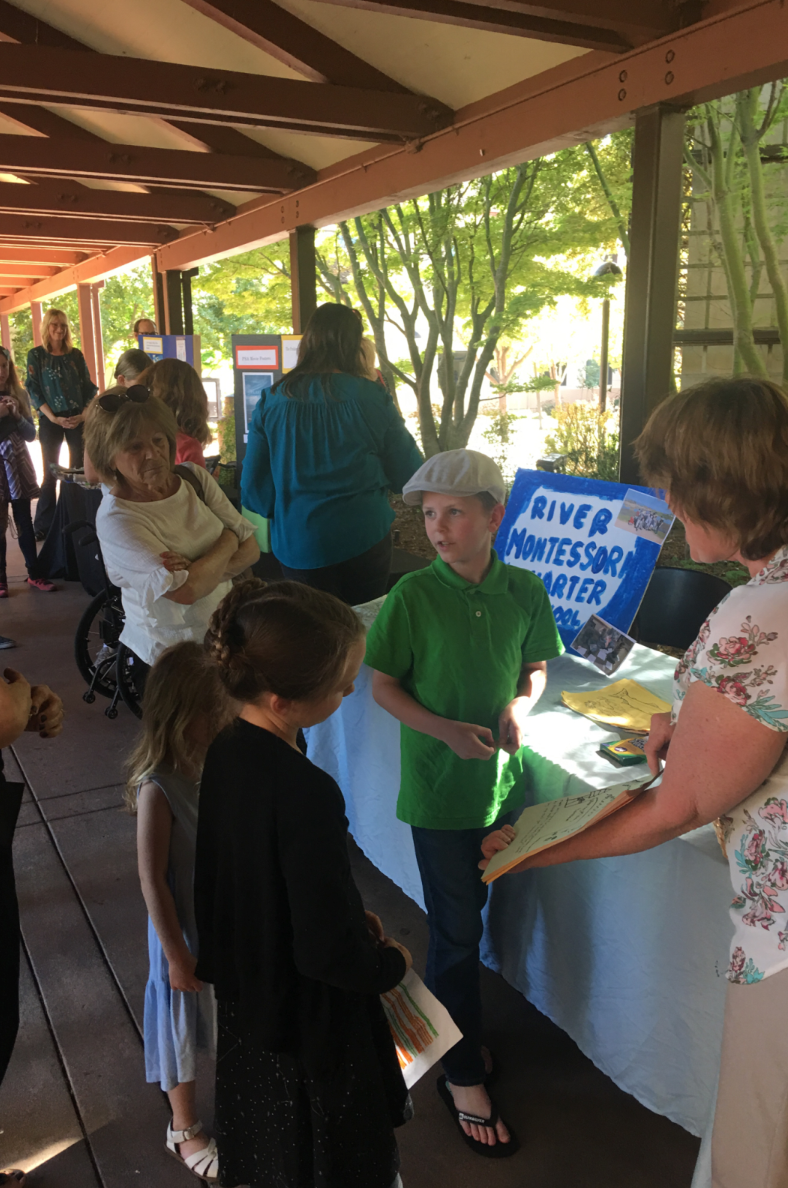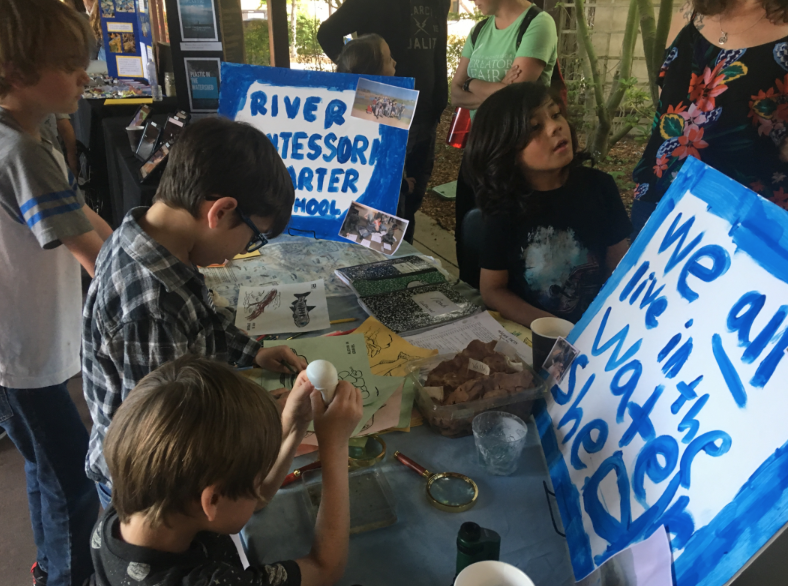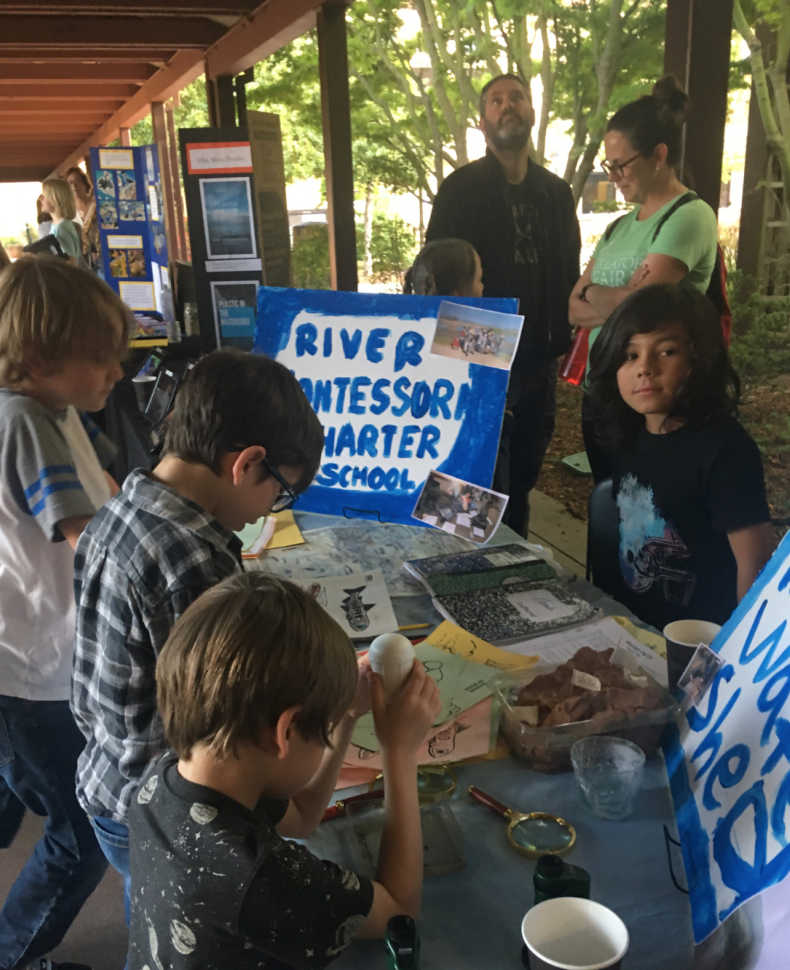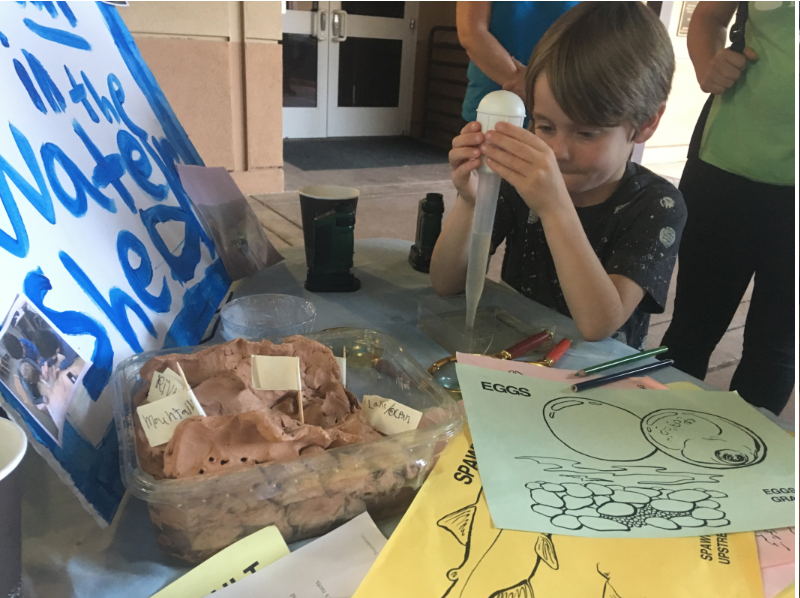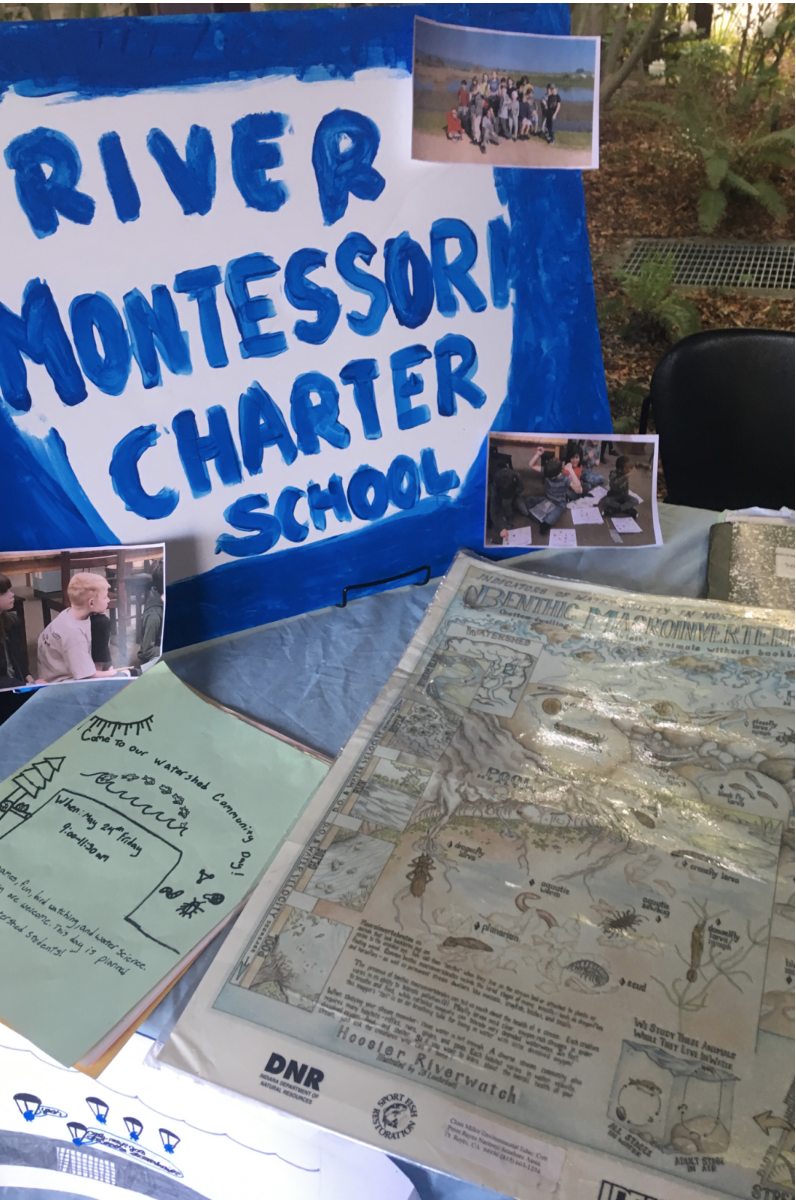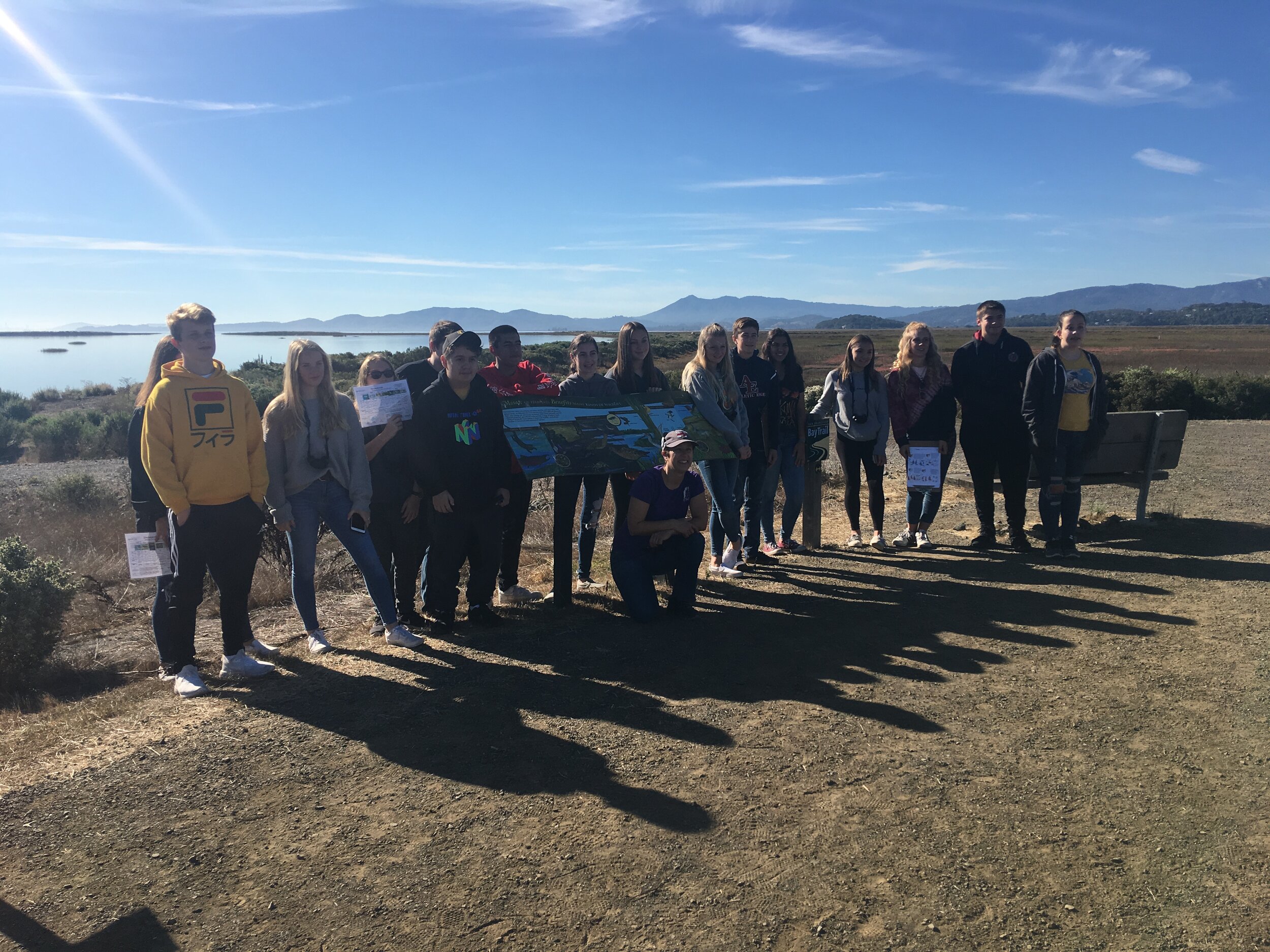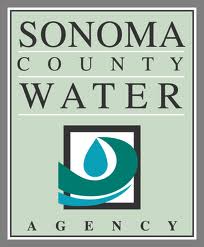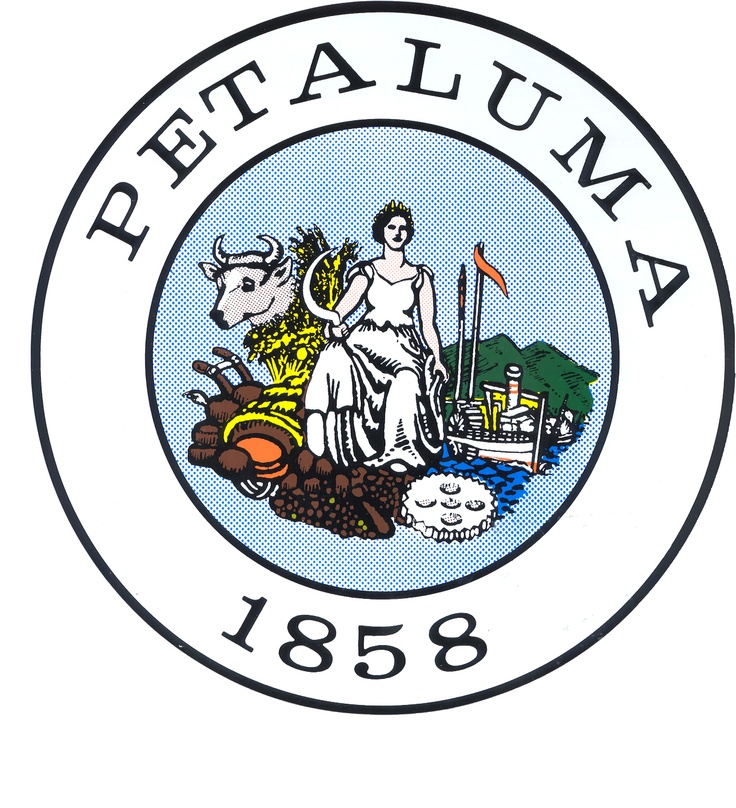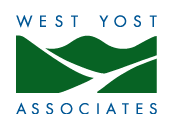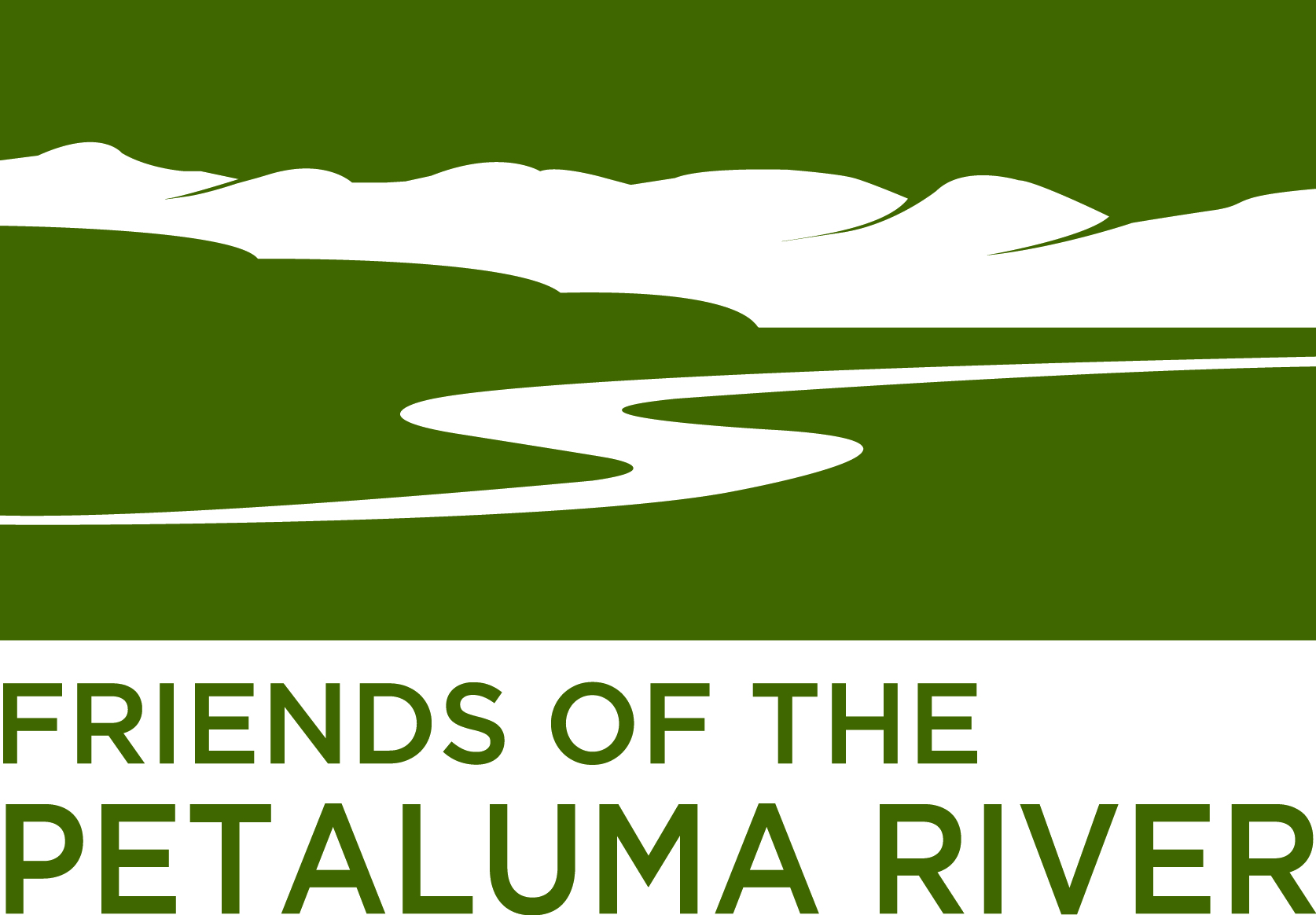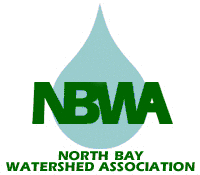Tabling at our Student Showcase
/As Watershed Classroom projects progress students produce and collect materials and data. These artifacts highlight different aspects of their project and are ideal for creating tabling displays. The tabling portion of the Student Showcase is held a half-hour before and after the students' presentations during the Student Showcases. It is an opportunity for visitors to interact not only with students, but also with the materials gathered and displayed; it is a tactile, physical way to engage with each project.
In past years classes have displayed work samples and photographs on poster board surrounded by additional artifacts; another class transformed their table into a riparian plant identification quiz.
This year Jessica Dennen’s Carpe Diem and Sonoma Mountain High School students shared an example of the birdhouses that they recently installed at Steamer Landing peninsula. They also brought one of the solar boxes that they built which will be used to facilitate Wi-Fi connectivity at the David Yearsley River Heritage Center. With big smiles they explained how made the solar boxes and recounted their recent field trip when they finally got to install the birdhouses.
Mary Collins Cherry Valley students covered poster board in pictures from their field trips and examples of writing done throughout the year. But what was probably most fun to see were the eight iPads that played student made PSAs. The 4th and 5th grade class worked in groups to develop short videos urging people to help our environment by eliminating single use plastic, using reusable straws, and other acts of conservation.
River Montessori Charter covered their table in examples of student work, photos, and hands on activities for guests to experiment. Third graders talked about the life cycle of salmon, handed guests magnifying, and help youngsters squirt water onto their clay watershed model.
The half hour before the event allows time for the community to become acquainted with the projects so that during the student presentations they have a reference point. The time after the presentations is very valuable for follow-up questions and clarification, as well as an opportunity to congratulate students on their presentations and hear more from their perspective.
